|
Author
|
Topic: Apollo 16: Post-flight explosion injured 46
|
Rusty B
Member Posts: 239
From: Sacramento, CA
Registered: Oct 2004
|
 posted 05-30-2011 03:22 PM
posted 05-30-2011 03:22 PM
   
A story about Apollo 16 I had not heard before: Ground service equipment being used to empty the residual toxic reaction control system (RCS) fuel remaining in the Apollo 16 command module tanks post landing exploded in a Naval Air Station hangar near San Diego. A total of 46 people were sent to the hospital for observation, most suffering from inhalation of toxic fumes. Most seriously injured was a technician that suffered a fractured kneecap when the GSE cart overturned on him. A hole was blown in the hangar roof 250 feet above, about 40 windows in the hanger were shattered and the Apollo 16 command module suffered a three inch gash in one of its panels. From the Google newspaper archive, |
Blackarrow
Member Posts: 3714
From: Belfast, United Kingdom
Registered: Feb 2002
|
 posted 05-30-2011 04:29 PM
posted 05-30-2011 04:29 PM
  
Was the residual fuel left in the Apollo 16 command module to avoid the problem on Apollo 15 when venting of fuel during descent caused one parachute to collapse? Is this an extreme example of the law of unintended consequences? |
Jim Behling
Member Posts: 1905
From: Cape Canaveral, FL
Registered: Mar 2010
|
 posted 05-30-2011 08:06 PM
posted 05-30-2011 08:06 PM
   
Yes. |
thisismills
Member Posts: 545
From: Michigan
Registered: Mar 2012
|
 posted 12-29-2020 11:53 AM
posted 12-29-2020 11:53 AM
   
Found an interesting group of photos documenting the event for sale on eBay.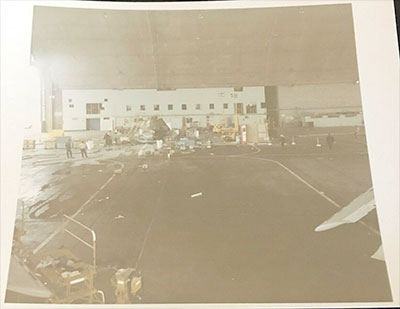 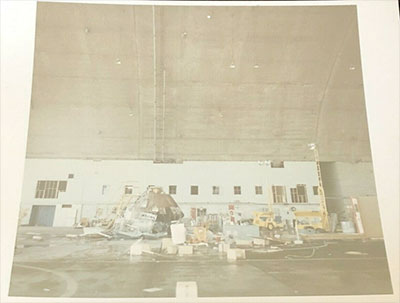
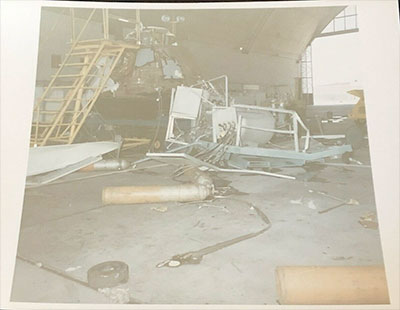
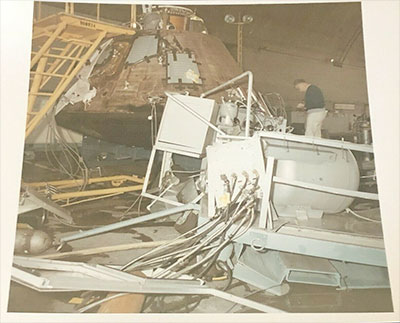

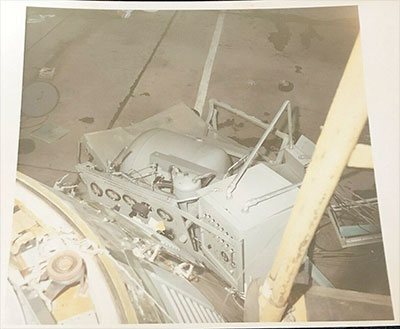
|
Fra Mauro
Member Posts: 1739
From: Bethpage, N.Y.
Registered: Jul 2002
|
 posted 12-29-2020 12:40 PM
posted 12-29-2020 12:40 PM
   
So what did they do as a remedy for the remaining CM landings? |
Headshot
Member Posts: 1303
From: Vancouver, WA, USA
Registered: Feb 2012
|
 posted 12-29-2020 02:13 PM
posted 12-29-2020 02:13 PM
   
A small side box on page 21 of the May 15, 1972 issue of Aviation Week & Space Technology ends with the paragraph: A spokesman for NASA Manned Spacecraft Center said the investigation board so far has seen no relation between the accident and procedural changes in the Apollo 16 landing in which the reaction control system fuel and oxidizer residuals were kept on board the spacecraft instead of being jettisoned before splashdown. |
Space Cadet Carl
Member Posts: 305
From: Lake Orion, MI
Registered: Feb 2006
|
 posted 12-30-2020 02:29 PM
posted 12-30-2020 02:29 PM
   
That's right. They decided not to dump RCS fuel on Apollo 16 because the mid-air dump had dissolved and collapsed a parachute on Apollo 15.
|
VideoGuy
New Member Posts: 2
From: Las Vegas, NV 89102
Registered: Mar 2024
|
 posted 03-23-2024 03:07 PM
posted 03-23-2024 03:07 PM
   
Having duty that day, I came in early to take photos of the Apollo 16 capsule that had just, hours before, arrived on the naval station, after traveling through the atmosphere and splashdown in the Pacific Ocean near Hawaii. The aircraft carrier, USS Ticonderoga was there to pluck the capsule out of the water and then travel to the naval station in San Diego to be defueled.At the naval station's photo lab where I was assigned, I loaded up my camera with film and proceeded to walk about 75 yards, across the street to where the Apollo capsule was being defueled. The capsule was placed in a huge hangar which normally houses six aircraft. One aircraft was taken out of the hangar in order to place the capsule safely protected. As I approached the capsule, I had to show my ID to the Marine guard protecting the capsule from prying eyes. After taking photos, I walked back to the photo lab. Once inside the lab, I began to take out the film. That's when I heard the most incredible explosion, the loudest sound I ever heard, and to this day (I'm 76 years old), it still is the loudest sound I've heard. In fact, that blast was heard eight miles away. I thought to myself, "aircraft are not allowed to fly faster than sound which produces a sonic boom, over a city, that is." Then, "I thought... THE CAPSULE!" I looked out the lab's window towards the hangar where the capsule was placed. I saw bright, vivid red smoke emitting from the side of the hangar. That same color red as seen on "I Dream Of Jeannie" when she appears and disappears into her bottle. I then, quickly, loaded up my camera with film and extra rolls of film to capture the event. As I entered the hangar, there were people laying on the ground, from the concussion of the explosion. Luckily, none of them were his with shrapnel. As I started to take photos, the fire department arrived. The fire captain shouted to me to "STOP TAKING PICTURES!!!" "Why?" I asked him. He said the electronic flash I was using might trigger another explosion. So, I unplugged my flash and continued to take photos. There were, based on news reports, 46 injured and taken to the hospital, due to fuel/fumes from the rocket fuel. I was the 47th victim, but I continued to take photos and never went to the hospital. After taking enough to capture the event, I walked back over to my lab, unloaded the exposed shots I took. During this unloading of film, I was called to the front desk of the lab. I was greeted by a gentleman from United Press International (UPI). He wanted my photos to put in the newspapers (local and around the world). He asked for three of my best shots. I obliged and proceeded to print up the best shots and presented the UPI guy with the photos. I was given the next day off for the extraordinary day I had the day before. Living off base, I woke up and drove down to a local restaurant to have breakfast and at the entrance of the restaurant was a newspaper stand. Low and behold, my photo was on the front page of the Los Angeles Herald Examiner. I placed a quarter in the slot, got a paper out and I still have that same paper today. 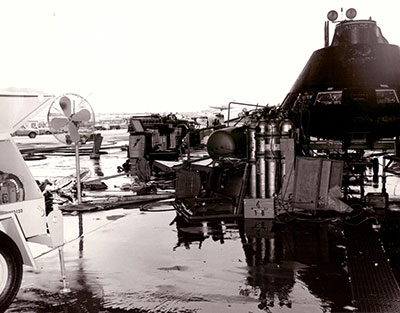 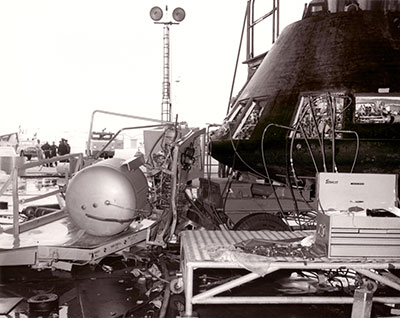
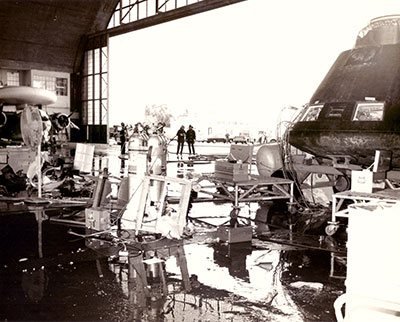
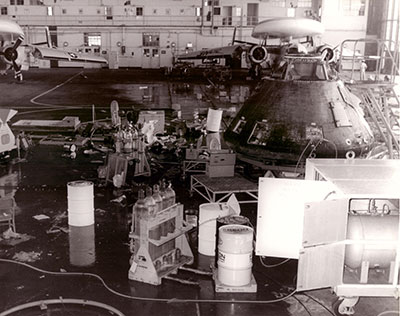
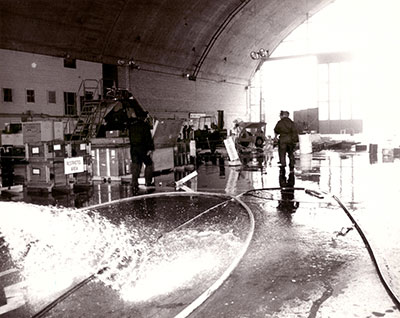
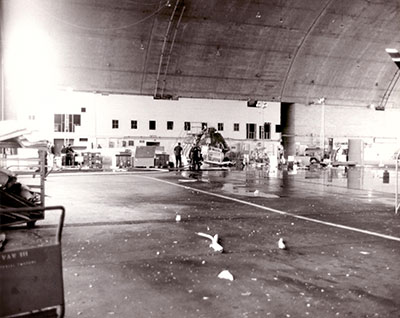
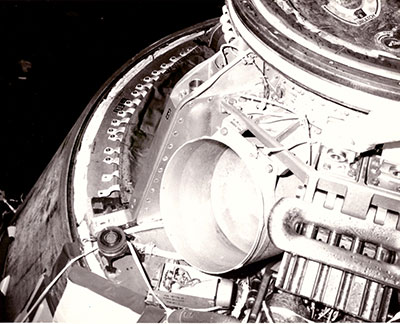
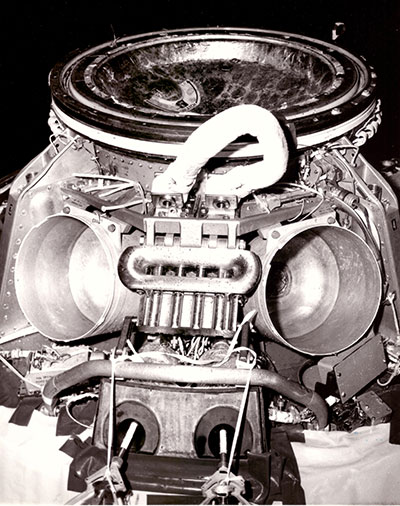
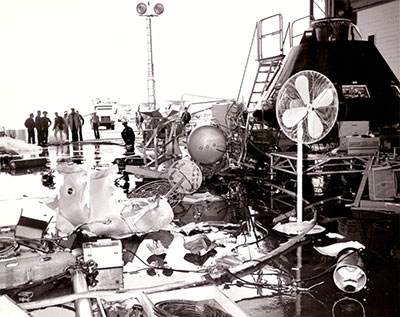
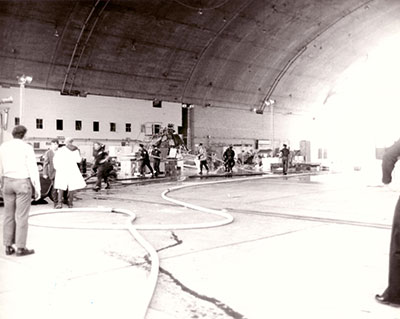
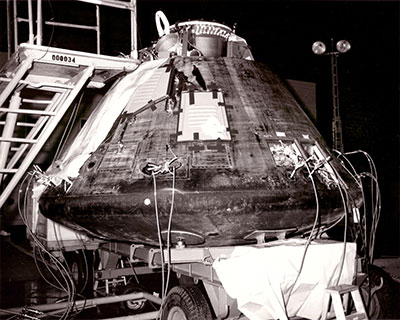
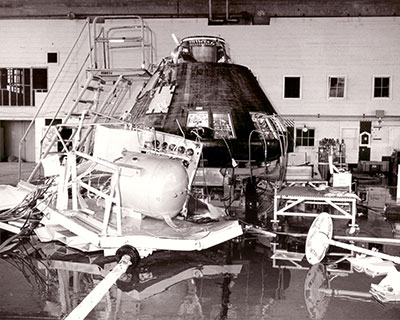
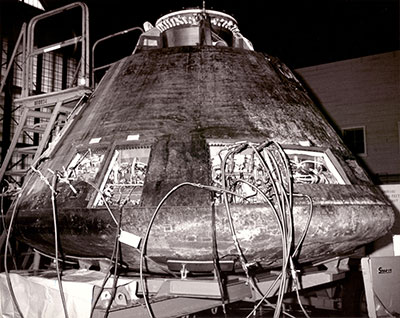
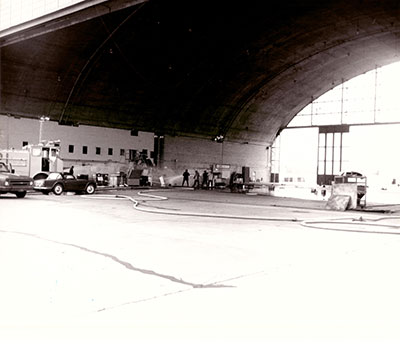
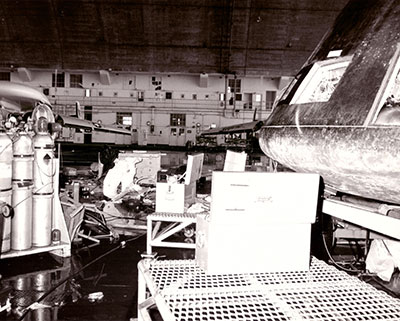
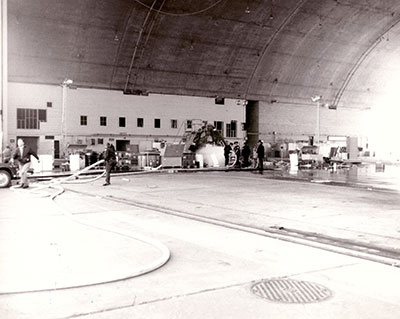
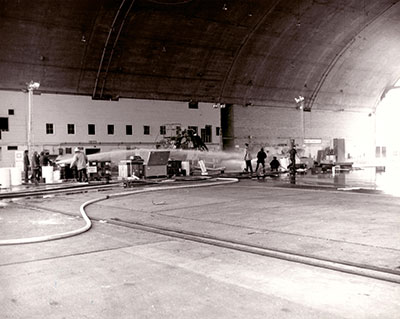
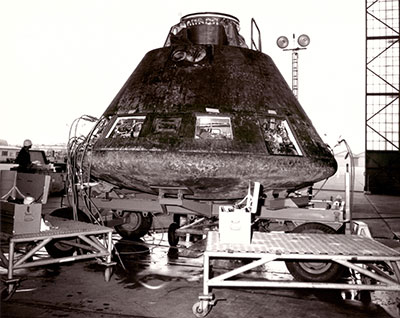
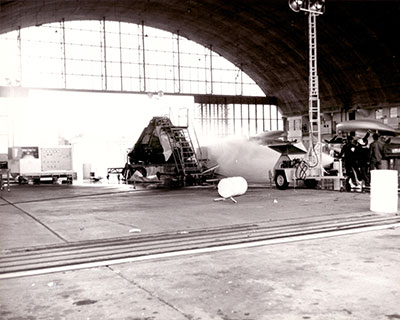
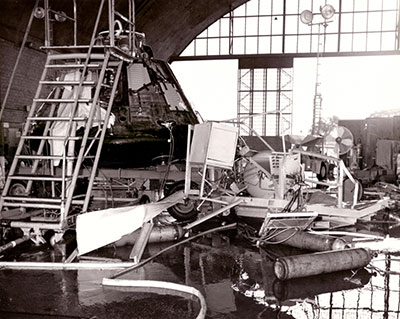
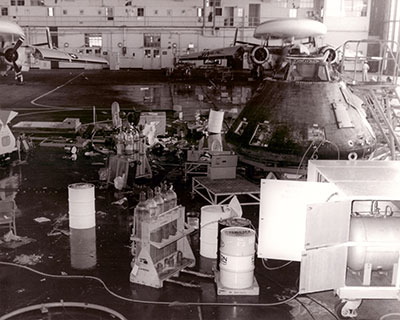
|
Buel
Member Posts: 895
From: UK
Registered: Mar 2012
|
 posted 03-23-2024 06:08 PM
posted 03-23-2024 06:08 PM
   
Wow. What chemicals caused this? |
SkyMan1958
Member Posts: 1374
From: CA.
Registered: Jan 2011
|
 posted 03-23-2024 06:20 PM
posted 03-23-2024 06:20 PM
   
Nice pics, thank you VideoGuy! |
Axman
Member Posts: 448
From: Derbyshire UK
Registered: Mar 2023
|
 posted 03-24-2024 07:09 AM
posted 03-24-2024 07:09 AM
   
On the spot testament. Excellent. With photos too! Extraordinary. |
SpaceAholic
Member Posts: 5347
From: Sierra Vista, Arizona
Registered: Nov 1999
|
 posted 03-24-2024 09:50 AM
posted 03-24-2024 09:50 AM
   
quote:
Originally posted by Buel:
What chemicals caused this?
Hypergolic propellant. Nitrogen tetroxide oxidizer emits a reddish/brown plume when vented.Thanks for sharing the images - Looks like the CM invaded Hawkeye country. |
Headshot
Member Posts: 1303
From: Vancouver, WA, USA
Registered: Feb 2012
|
 posted 03-24-2024 10:22 AM
posted 03-24-2024 10:22 AM
   
Great images. I love the story too. Obviously from a true photographer. Hats off to you for sharing with us. |
VideoGuy
New Member Posts: 2
From: Las Vegas, NV 89102
Registered: Mar 2024
|
 posted 03-24-2024 10:54 AM
posted 03-24-2024 10:54 AM
   
To give you all an idea of where the Apollo 16 capsule was placed inside of a huge hangar, behind the hangars is the photo lab. (photo source).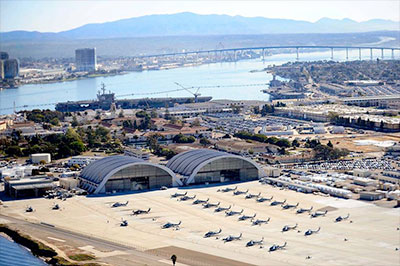 Each hangar is 90 feet in height. The walls and ceiling and roof eight inch thick concrete. When the defueling device exploded it sent shrapnel everywhere, embedding pieces in the walls and into the five planes inside that hangar. Shrapnel also hit one of the CO2 tanks (5½ feet tall) standing next to the defueling device, ripping off one of the tank's bottle's valves. Just like puncturing a hobby CO2 cartridge and watching it fly in any direction, this tank then flew up towards the hangar's ceiling, puncturing a hole in its eight inch thick concrete and now all were able to see sky through that hole. It was also mentioned that the power of the explosion sent this huge hangar up and off its foundation and settling back down again. But, this was not verified, that I know of. The five aircraft inside the hangar were considered "damaged" due to, again, shrapnel and damage due to the fumes of the rocket fuel being emitted from the defueling device. |
lukr
New Member Posts: 9
From: Melbourne, Australia
Registered: Feb 2018
|
 posted 05-16-2024 02:09 AM
posted 05-16-2024 02:09 AM
   
quote:
Originally posted by VideoGuy:
I came in early to take photos of the Apollo 16 capsule...
Great photos. Very useful for my model building project!! |







































